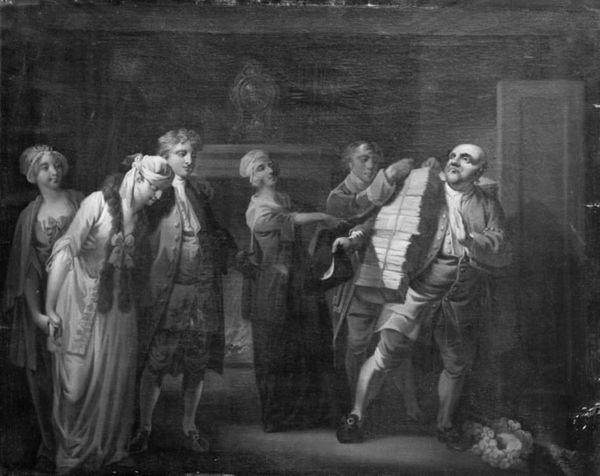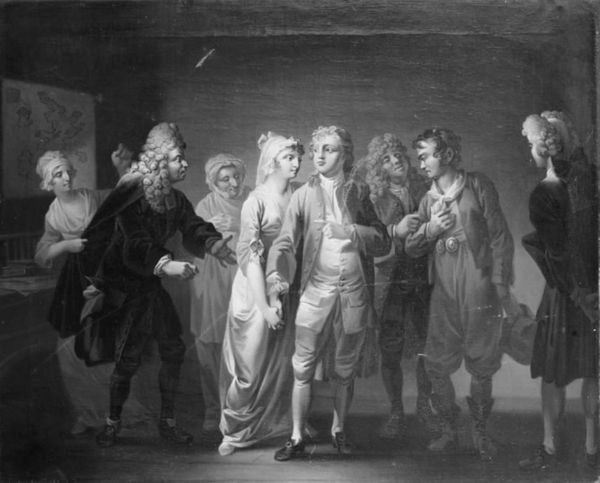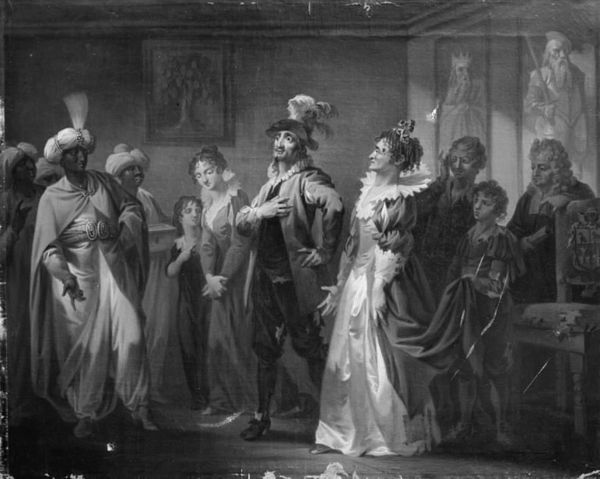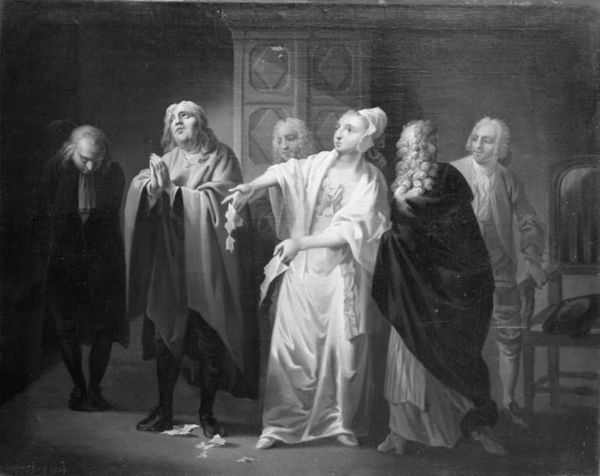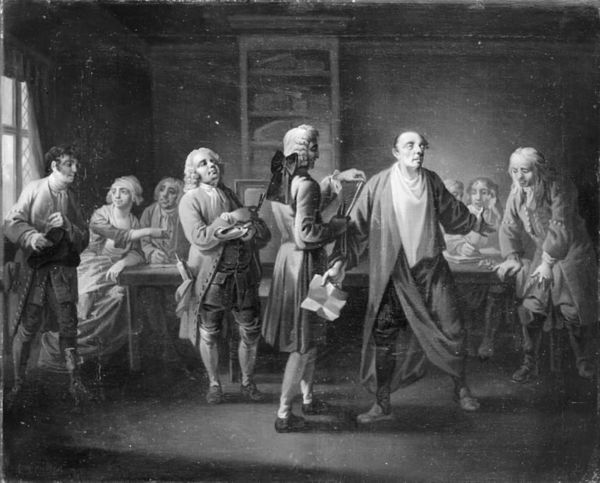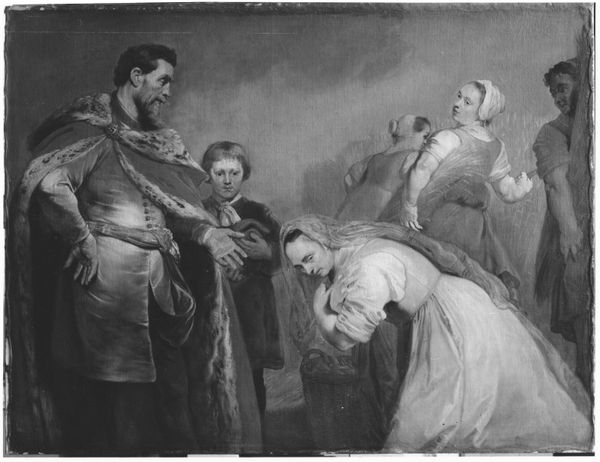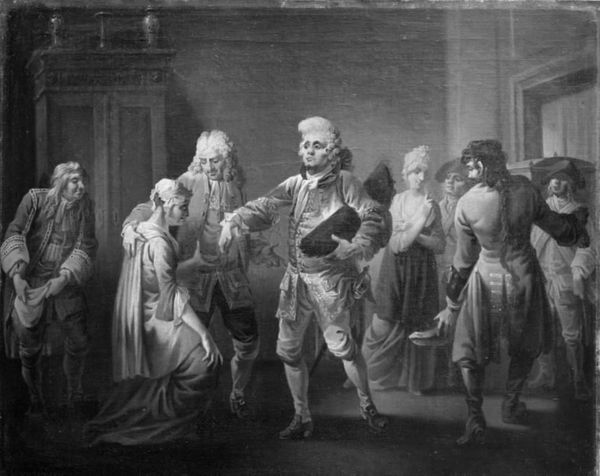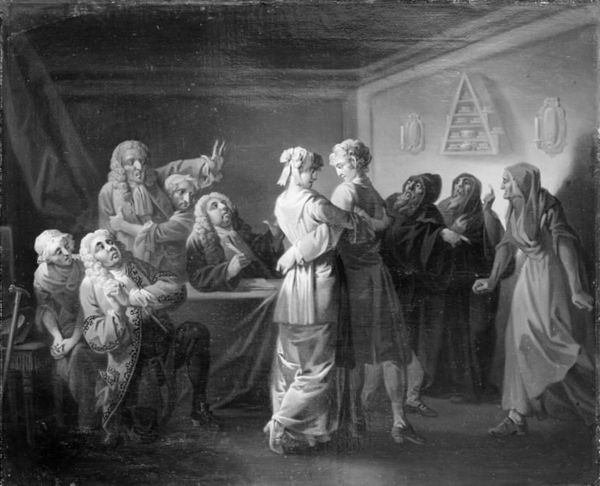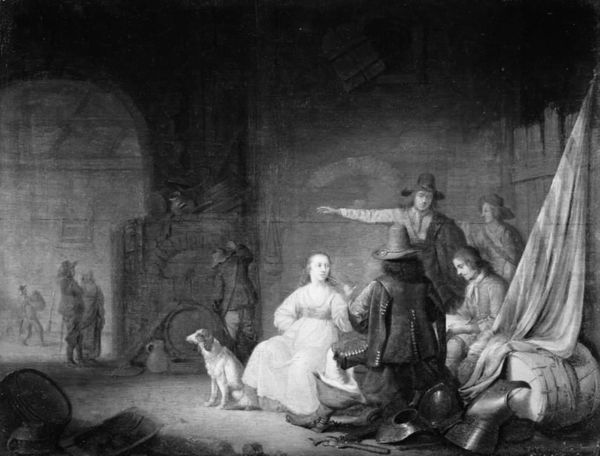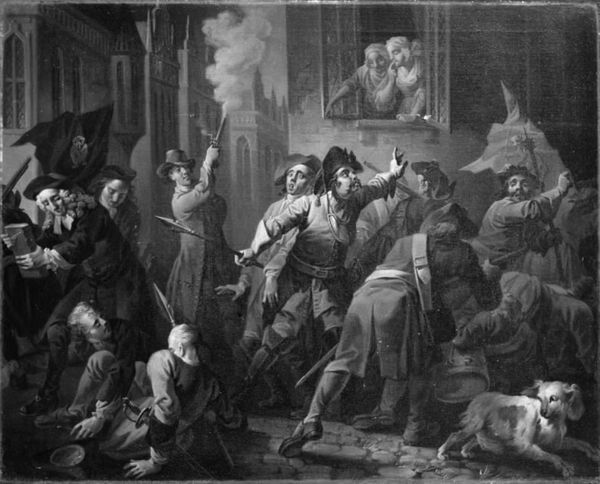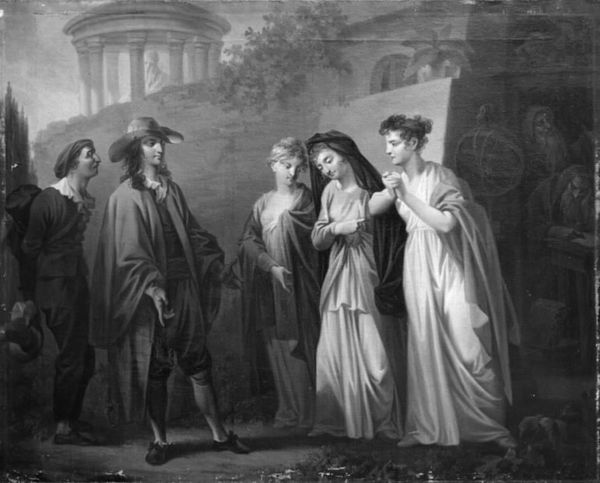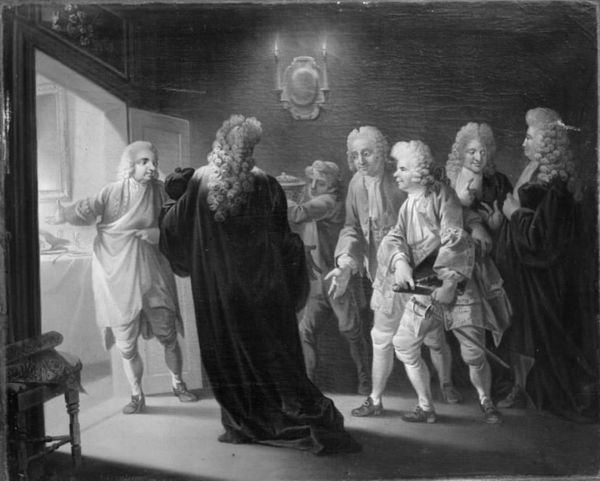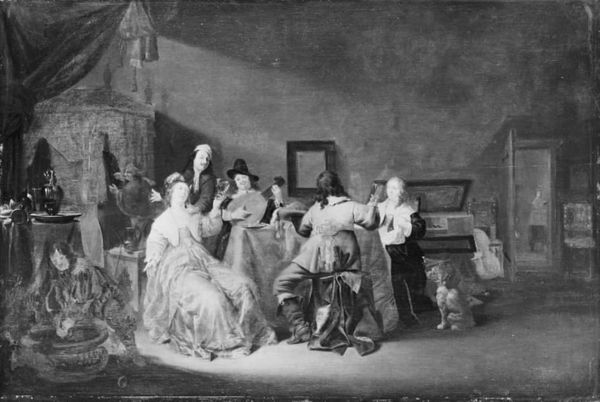
painting, oil-paint, canvas
#
portrait
#
narrative-art
#
painting
#
oil-paint
#
figuration
#
canvas
#
romanticism
#
black and white
#
genre-painting
#
history-painting
#
monochrome
#
monochrome
Dimensions: 60 cm (height) x 74 cm (width) (Netto)
Curator: What strikes me most about C.A. Lorentzen’s 1815 canvas, Henrik og Pernille, III akt, 13. scene, is the charged stillness. It's an odd juxtaposition; everyone appears posed for a play, yet palpable drama unfolds. Editor: Yes, I agree. Immediately, my eye is drawn to the contrasts. The tonal range creates two distinct zones—a bright, almost ethereal gathering on the left sharply divided from the darker, turbulent activity to the right. It's like observing two separate dramas unfolding within the same frame. Curator: Indeed! This scene portrays Act III, Scene 13 from Ludvig Holberg’s play "Henrik and Pernille," where societal expectations clash with personal desires. Observe how Pernille extends her hand in what could be acceptance of a proposal, while others react with various shades of shock and disapproval. Editor: The formal arrangement, mirroring the tension of the subject, is quite masterful. Look at how Lorentzen balances the composition. On one side you have flowing fabrics and gestures while on the other stiff body language and resistance. Curator: These gestures communicate so much. Notice the central couple, bathed in soft light. Their figures project themes of love and choice against the expectations represented by the onlookers—each character embodied in a moment of profound significance. Consider, also, the symbolism within those contrasting emotional displays. How has social disapproval echoed across centuries in its stifling effects on freedom? Editor: That's a crucial point. The restricted palette of black and white could symbolize constraint, lack of choice, and even, perhaps, the moral absolutes of the era weighing heavily on these figures. Although one could also simply say it is unfinished… Curator: Perhaps, but even unfinished, its monochrome lends a universality that resonates beyond its time. It suggests timeless conflict between individual will and societal norm. A stage set indeed, where each actor, us included, play an inherited part. Editor: It's intriguing to see how a formal reading reinforces the conceptual depth here. Lorentzen’s choices are deeply intertwined, layering meaning that remains relevant today. The formal design really emphasizes that drama and division you discussed earlier. Curator: Yes, Lorentzen's work allows us to see how historical artworks aren't merely aesthetic objects, but repositories of cultural memory, inviting contemplation on how echoes of history reverberate even in contemporary experience.
Comments
No comments
Be the first to comment and join the conversation on the ultimate creative platform.
